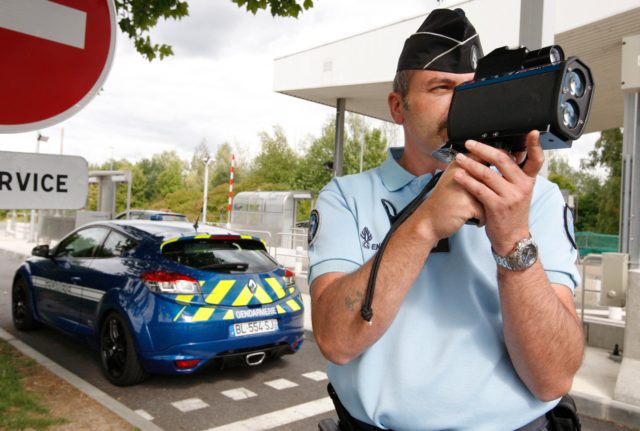May 2024 is a good one for workers in Germany, with three nationwide public holidays scattered throughout the month – plus a regional one.
READ ALSO: ‘Bridge days’: How to maximise public holidays like a German this May
With Christi Himmelfahrt or Ascension Day coming up on Thursday – and with many Germans taking the Friday off as a Brückentag (bridge day) – it’s expected to busy on the transport network.
Germany’s largest motoring club, the ADAC, warned of heavy traffic jams due to many people driving, as well a around 1,300 road works.
“There is a particular risk of traffic jams on the motorways near urban centres, the travel routes towards the Alps and the coast and on the access routes to local recreation areas,” said the ADAC.
Roads will start to get busy on Wednesday afternoon, the day before the national holiday.
In the states of Berlin, Bremen, Hamburg, Mecklenburg-Western Pomerania, Lower Saxony, Saxony, Schleswig-Holstein and Thuringia, the day after the public holiday, Friday May 10th, is officially school-free. In Schleswig-Holstein, this is also the case on Saturday, May 11th.
The wave of returning travellers will reach its peak on Sunday afternoon, May 12th, until the evening. It should be relatively quiet on the Autobahn network on Friday, May 10th and Saturday May 11th (so if you’re thinking of doing a day trip, perhaps one of these days is your best bet).
To put it in perspective, in 2023 the day before Ascension Day was one of the busiest days of the year on the road, accounting for a massive 2,250 hours of traffic jams.
Experts say the following roads have the highest risk of traffic jams:
– Roads in and around greater Hamburg, Berlin, Cologne, Frankfurt, Stuttgart and Munich
– A1 Cologne – Bremen – Hamburg – Lübeck
– A2 Berlin – Hanover – Dortmund
– A3 Cologne – Frankfurt – Würzburg – Nuremberg
– A4 Kirchheimer Dreieck – Chemnitz – Dresden – Görlitz
– A5 Hattenbacher Dreieck – Darmstadt – Karlsruhe
– A6 Heilbronn – Nuremberg
– A7 Hamburg – Hanover and Würzburg – Füssen/Reutte
– A7 Hamburg – Flensburg
– A8 Stuttgart – Munich – Salzburg
– A9 Munich – Nuremberg – Berlin
– A10 Berliner Ring motorway
– A61 Mönchengladbach – Koblenz – Ludwigshafen
– A81 Stuttgart – Singen
– A93 Inntaldreieck – Kufstein
– A95 /B2 motorway Munich – Garmisch-Partenkirchen
– A99 Munich motorway ring road
Ascension Day is also a public holiday in Austria and Switzerland so keep that in mind if you’re travelling over the borders.
This is likely to be particularly noticeable on the access roads to the excursion regions in the road network of the Alpine countries. In Austria, for instance, this includes the Carinthian lakes, the Salzkammergut, Lake Neusiedl and in Switzerland, it includes the cantons of Ticino and Valais. Longer journey times should also be planned for the Tauern, Fernpass, Brenner, Rhine Valley and Gotthard routes.
Those in the south of Germany may also travel towards Lake Garda and other holiday regions in Italy so it could be busier on roads leading to this region.
READ ALSO: Can I take my child out of school in Germany to go on holiday?
What’s open and closed on Ascension Day?
Ascension Day, which is also Vatertag (Father’s Day) in Germany is a Feiertag (public holiday) which means almost all shops, offices and schools are closed for the day. As we mentioned, some states also shut schools on the Friday after the holiday.
Restaurants, cafes and beer gardens are usually open on the day because it is a good one for business.



 Please whitelist us to continue reading.
Please whitelist us to continue reading.
Member comments